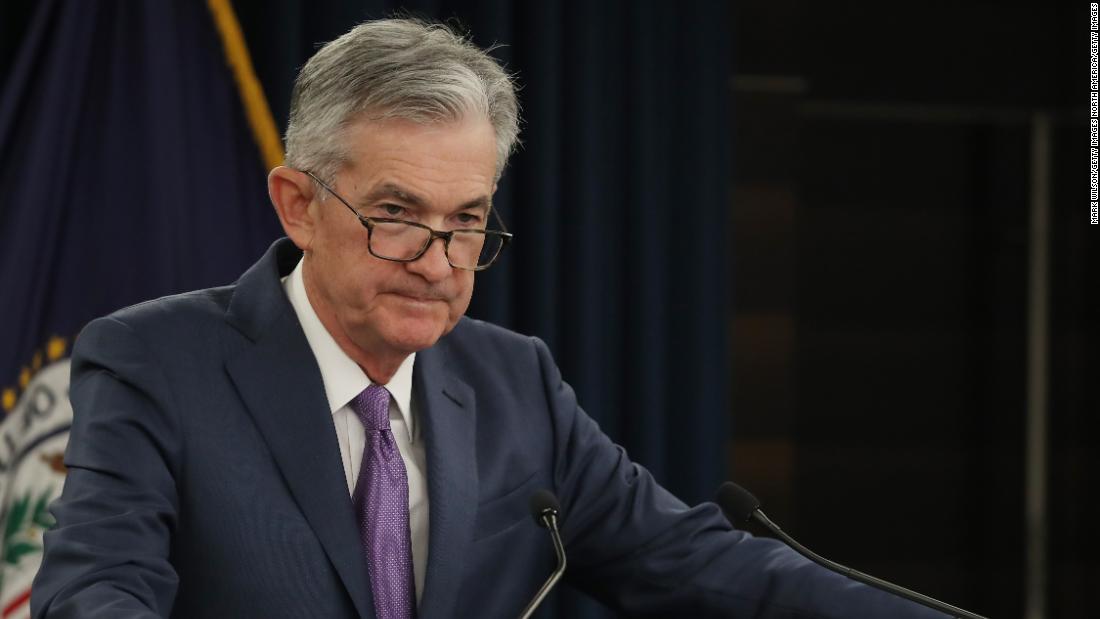(Reuters) - A key interest rates the Federal Reserve aims to influence to control monetary policy broke above the top-end of the central bank’s target range for the first time since the global credit crisis more than a decade ago.
The effective or average interest rate on what banks charge each other to borrow reserves overnight rose to 2.30% on Tuesday, above the Fed’s current target range of 2.00%-2.25%, New York Federal Reserve data showed.
WILLIE DELWICHE, INVESTMENT STRATEGIST, BAIRD, MILWAUKEE
“It’s probably nothing. It’s probably the sort of seasonal, technical sorts of things that people are using to explain it away. But there is a risk that there is some trouble in the monetary plumbing in the economy.”
“If you step back, Fed easing for the most part was extremely experimental. This tightening phase has been extremely experimental. You don’t realize what is going on until you are actually in it, and you start to see some of this stuff and that could be what’s going on.”
“I’d be more reassured by it if someone was saying, ‘Hey, this might happen,’ it happened and then people say, ‘But don’t worry about the rest of it, it’s going to be fine.’ Instead, it’s something that was a surprise and people are quick to say, ‘It’s no big deal.’ You weren’t anticipating it in the first place, so then how can you say there’s no other problems that are going to come after it?”
KEN POLCARI, MANAGING PRINCIPAL, BUTCHER JOSEPH ASSET MANAGEMENT, NEW YORK
“I wouldn’t say everyone got up in a panic the way they did, remember two weeks ago — the minute the 10-year inverted there was this panic. I wouldn’t be so panicky today based on what happened last night. But it speaks of maybe a broader underlying trend that may be developing, so in order to not lose control the Fed is going to have to stay on top of that. I don’t believe it is a signal of concern, I think it is an aberration. The Fed is constantly doing those overnight repos, it is part of what they do to help fund the system. A lot of that was driven by the huge tax payments that came due and big corporation had to pay so, therefore, that was part of the reason and that makes perfect sense. Which is why I wouldn’t necessarily be raising the alarm bells going, ‘oh my God this is over,’ I don’t think that is the case. Nor do I think the Fed is losing control, but that being said, if this continues, if tomorrow is the same thing, the next day is the same thing then I would say there is more under the hood but I wouldn’t say that right now.
“We are still much closer to the highs than not and therefore today’s announcement that they are cutting rates by 25 basis points could actually produce that buy-the-rumor, sell-the-news report. Because they took the market right back up to the highs, now they are going to announce it so it wouldn’t surprise me to see the market get hit today as people take the profits over the past couple of days.”
MICHAEL SKORDELES, U.S. MACRO STRATEGIST, SUNTRUST ADVISORY SERVICES, ATLANTA
“The big takeaway is it’s not a big issue. A lot of companies had parked funds in money markets, but with the expectation of the Fed continuing to lower rates, why keep it in money markets if it’s going to be parked a little while longer? Why did the Fed have to step in? They used to always do it. But since there has been so much liquidity sloshing around, there wasn’t much need. Now that rates are moving downward and people are moving funds around, rather than parking them in money markets, there’s an opportunity to have a mismatch in funds. Our view is that it’s fairly straightforward and not that big of a deal. We’re not seeing the signs of stress that some people are ascribing to it.”
“This (jump in the fed funds rate) is lock, stock and barrel the same mismatch of funds in the money market (pushing up) the fed funds rate.”
SUBADRA RAJAPPA, HEAD OF U.S. RATES STRATEGY, SOCIETE GENERALE, NEW YORK
“It adds the uncertainty, the repo market is $1 trillion plus and when you start seeing funding stresses of this magnitude it signals that it’s probably demand for reserves.”
“The question really becomes how is the Fed going to make sure we don’t have this volatility in the repo markets, and reacting to it with the repo facility and making cash available for traders. The question is should they be doing more? With the spike in effective fed funds will that mean they will be cutting IOER, and also they could potentially introduce a standing repo facility which they have discussed in the past, or they can start organically growing their balance sheet.”
“I think it’s a bit premature to either grow the balance sheet or introduce a standing repo facility, but we might get a little bit more color in the press conference from Chair Powell.”
LOU CRANDALL, CHIEF ECONOMIST, WRIGHTSON ICAP LLC, NEW YORK
“The fed funds rate is a sideshow when you have seen all the volatility in the repo rate. Yes it’s above the top end of the Fed’s target range. It was 5 basis points out of the range. It’s a pretty small miss.”
Compiled by Alden Bentley
Let's block ads! (Why?)
https://www.reuters.com/article/us-usa-fed-repo-reaction-instant-view/instant-view-us-fed-funds-rate-breaks-above-feds-target-range-idUSKBN1W31TW
2019-09-18 13:56:00Z
52780383489542






